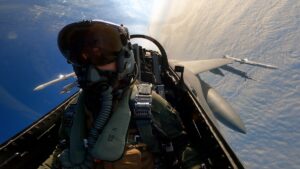
The U.S. Air Force is seeking industry's ideas for large-scale defeat of ground moving targets. Air Force Secretary Frank Kendall recently laid out a set of seven operational imperatives for the service--a list that he said would evolve and a list that includes effective ground moving target indication and air moving target indication (Defense Daily, Jan. 19). The Air Force "is seeking information on how an interested contractor could provide material solutions and capabilities that would enable the Air Force…














